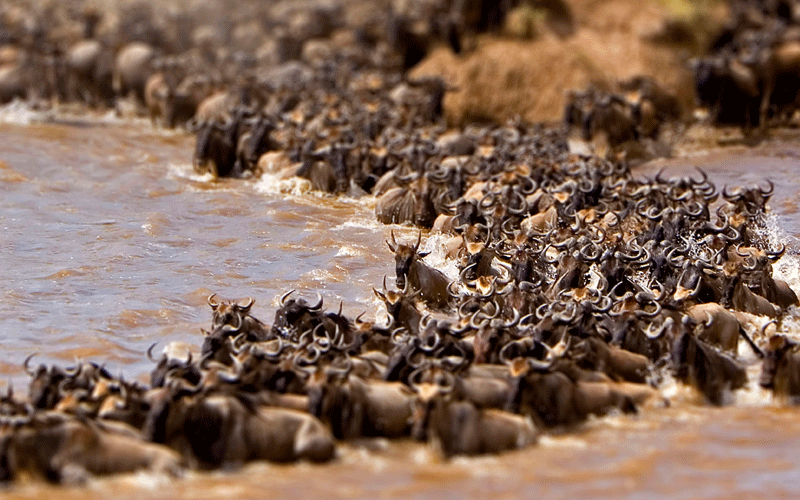Wildebeests storm the Mara, but nobody is watching

The first group of an estimated 300,000 wildebeests have crossed into Masai Mara Game Reserve from Serengeti in Tanzania, kicking the annual tourism peak season.
About 2.7 million gnus are expected in the reserve by August, ecologist says. They started crossing the crocodile-infested Mara River and Sand River crossing points last weekend.
However, unlike in previous years since 1958 when the reserve was established, there were no tourists and international TV crews to record the spectacular event.
About half a million tourists visit the Mara annually to watch the crossing and stay in about 130 lodges and camps in the sprawling reserve which are now closed since April when the government closed the airspace.
Nick Murero, the Mara-Serengeti Ecosystem coordinator for Lake Victoria Basin told TravelWise the gnus which come to graze and mate, might stay in the Mara until early October because of enough fodder and absence of disturbance from tourists.
“The recent heavy rains and absence of visitors have worked in their favour.
The population of lions, hyenas, leopards and cheetahs which will be preying on the wildebeests and zebras accompanying the gnus, has gone up since April because of absence of disturbances,” he added
Due to on-going rains, the water level of the Mara River is high, making the crossing more interesting than in the last two decades.
Talek River and other streams, on the verge of drying up last year, are now flowing.
Joseph Sindiyo, the Narok County Park Warden says more wildebeests are expected by next weekend.
Game drives would have been satisfying for tourists because they could have watched all wild animals from short distances from hotels.
“By now hundreds of tourists would be here watching the migration. It is the first time this is happening,” he said.











